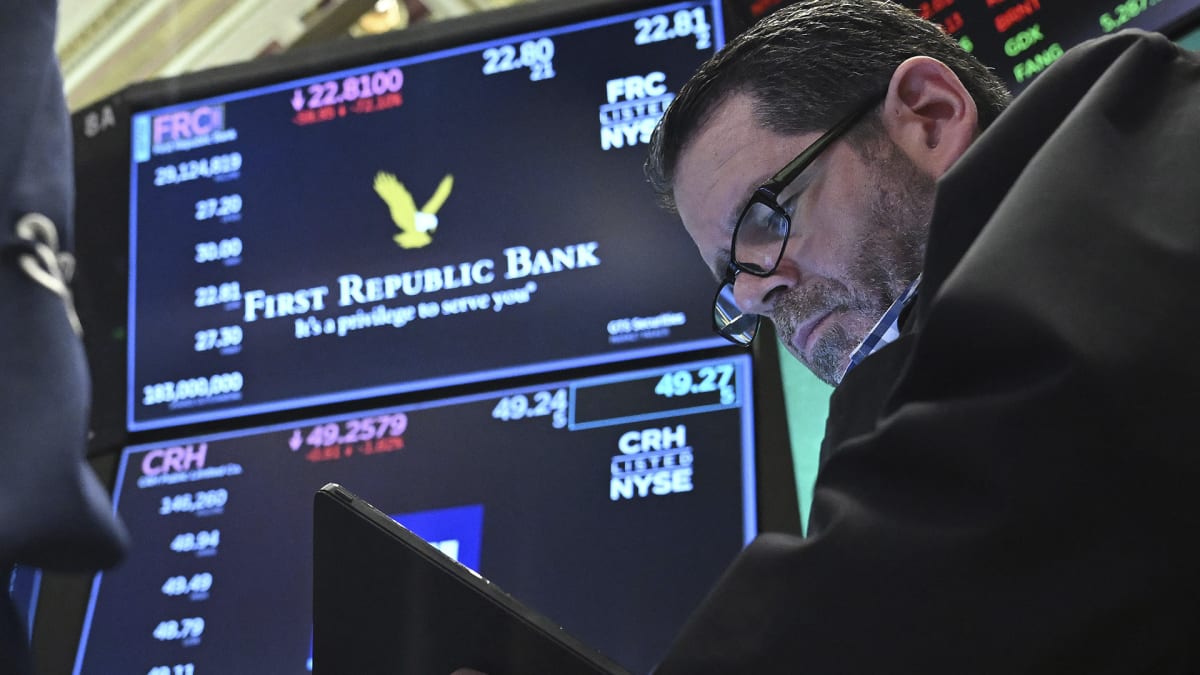
U.S. bank stocks moved higher Thursday, paced by JPMorgan (JPM), Goldman Sachs (GS) and Morgan Stanley (MS), following a successful round of sector stress tests published late Thursday by the Federal Reserve.
All 23 banks passed the Fed's annual assessment, which tests their ability to weather a significant economic downturn that this year included a 38% slump in the housing market, an unemployment rate of more than 10% and a severe recession that would contract GPD by around 8.75%.
Banks would collectively suffer around $541 billion in losses under those adverse scenarios, but still have capital buffers -- which protect depositors -- that are more than twice the minimum requirement under internationally-agreed rules.
"Today's results confirm that the banking system remains strong and resilient," said the Fed's head of supervision Michael Barr said. "At the same time, this stress test is only one way to measure that strength. We should remain humble about how risks can arise and continue our work to ensure that banks are resilient to a range of economic scenarios, market shocks, and other stresses."
JPMorgan shares were marked 2.77% higher in early Thursday trading to change hands at $142.41 each, while Goldman Sachs gained 3.6% and Morgan Stanley gained 1.1%.
Citigroup (C), the only member of the 'big six' U.S. banks that is likely to see higher capital requirements next year, was marked 0.05% higher at $46.25 each.
Banks are now able to update investors on any plans to return capital to shareholders as a result of passing the stress tests, likely after the close of trading on Friday,
U.S. banks paid out a record $59.01 billion in aggregate dividends last year, according to data from S&P Global Market Intelligence, an 8% increase from 2021 levels.
JPMorgan topped last year's list with a $13.56 billion payout, while Wells Fargo (WFC) increased its dividend by 45.9% to $5.29 billion.
However, analysts suggest the weakening economic backdrop, as well as the lingering effects of the springtime collapse of Silicon Valley Bank and the sale of First Republic to JPMorgan, will keep shareholders returns at bay.
A Thursday report from London's Financial Times also suggested that some of the biggest U.S. banks are sitting on billions in unrealized losses in their bond portfolios as a result of purchases made during the peak of the 2020 pandemic, when yields on longer-dated bonds were near historic lows.
Federal Reserve Chairman Jerome Powell said Thursday that the central continues to "very carefully monitor the banking sector, telling an event in Madrid that he was "very reluctant to say" if the sector's recent crisis is completely under control.
Last week, Fed data indicated that U.S. banks continued to tap the Federal Reserve's various lending programs, suggesting stress from the country's regional lending crisis earlier this spring continue to linger.
Banks borrowed $3.2 billion from the Fed's main discount window over the seven-day period ending on June 21, down from the $3.6 billion handed-out over the prior period.
Borrowing from the Fed's Bank Term Funding Program, which allows banks to exchange high-quality assets for one-year loans, was up $700 million to $102.7 billion while its other credit" account, which has been used to allocate borrowing from the First Republic Bank, slipped $8 billion to $172.3 billion.
July 4th Sale! Receive full access to real-time market analysis along with stock, commodities, and options trading recommendations. Sign up for Real Money Pro now for 65% off.







